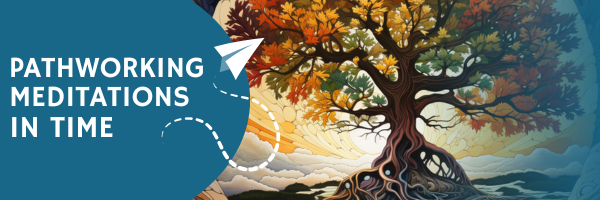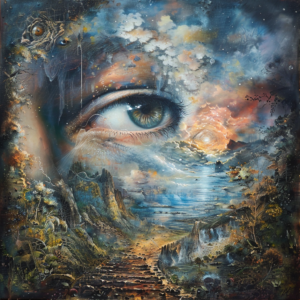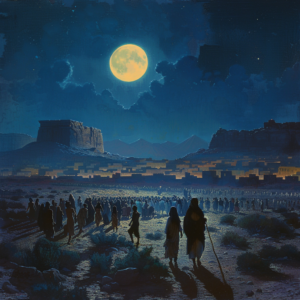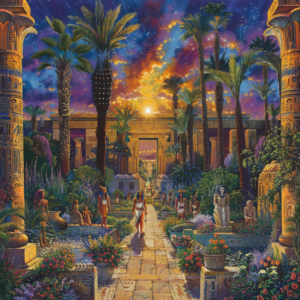
Part 1: The Awakening
In the heart of Chicago, amidst the towering skyscrapers and bustling streets, 30-year-old Aiko Tanaka led a life of quiet resilience. A Japanese American, she balanced her cultural heritage with the fast-paced demands of modern urban life. By day, she worked as a geneticist at a renowned research facility. By night, she found solace in the simple pleasures of singing traditional Japanese songs passed down through generations.
Her life took an unexpected turn when news broke that the particle reactor at CERN had inadvertently opened a stargate. Initially met with skepticism and curiosity, the phenomenon quickly turned sinister. Through the stargate, beings of unimaginable horror emerged – the Nephilim, ancient giants once considered a mere myth.
The first encounter happened on a dreary afternoon. The sky darkened as if swallowed by an abyss. Aiko, walking home from work, felt an unsettling chill. She turned a corner and froze. A creature straight out of nightmares stood towering over the city’s skyline. Its eyes glowed with an eerie red light, and its skin was a grotesque patchwork of scales and sinew. The Nephilim had arrived.
The city descended into chaos. The Nephilim, embodiments of pure evil, wreaked havoc wherever they went. Their voices boomed with malice, and their presence spread fear like a contagion. They sang songs of destruction, their chants resonating with an ancient, dark power that unsettled the soul.
As Aiko navigated the commotion, she stumbled upon a group of survivors huddled in an abandoned church. Among them was Father Michael, a kind-hearted priest who had once served as a beacon of hope in the community. Now, he looked to Aiko for guidance.
“Aiko, you have a light within you,” he said, his voice trembling. “I’ve seen you sing, heard your songs of peace and resilience. We need that light now more than ever.”
Aiko nodded, feeling a sense of duty she had never known before. She began to sing, her voice cutting through the darkness like a light blade. Her songs, a blend of traditional Japanese hymns and modern melodies, brought a sense of calm and hope to the weary souls around her.
One evening, as the Nephilim’s malevolent chants echoed through the streets, Aiko stood her ground. She sang louder, her voice filled with unwavering resolve. The Nephilim turned their glowing eyes toward her, their twisted faces contorted with rage.
“Human, your light is futile,” one of them hissed, its voice dripping with venom.
“Your darkness cannot extinguish my light,” Aiko responded, her voice steady and defiant.
The encounter marked the beginning of an epic battle between light and darkness. As the days turned into weeks, Aiko’s voice symbolized resistance. The Nephilim, relentlessly pursuing chaos, challenged themselves by this lone beacon of hope.
Part 2: The Gathering Storm
The days following the Stargate’s opening were a blur of fear and confusion. The Nephilim roamed the streets of Chicago with an imposing presence, their very footsteps causing the ground to tremble. These giants, towering over even the tallest buildings, were an unholy amalgamation of human and beast, their bodies marked with scars and ancient symbols glowing with a sinister light.
Aiko continued to sing, her voice a beacon amid the encroaching darkness. Her favorite songs were those her grandmother taught her, like “Sakura Sakura,” which spoke of cherry blossoms and the fleeting beauty of life. These songs, filled with delicate imagery and haunting melodies, starkly contrasted the Nephilim’s discordant chants.
One evening, as Aiko led a group of survivors in song, a Nephilim approached. This one was even more terrifying than the others, with wings that stretched wide and eyes that seemed to pierce through the very soul. It halted before the church, its mouth curling into a sinister smile.
“You think your songs can save you?” it growled. “Your light is nothing compared to our darkness.”
Aiko took a deep breath, her heart pounding. “My light comes from a place you cannot touch,” she replied. “It comes from hope, love, and the resilience of humanity.”
With a roar, the Nephilim lunged at the church, but a sudden flash of light stopped it. Father Michael had stepped forward, holding a cross that seemed to glow with an inner light.
“Begone, creature of darkness!” he commanded.
The Nephilim snarled but retreated, its form dissolving into the shadows. The survivors cheered, but Aiko knew this was just the beginning. The Nephilim were relentless, and their leader, a particularly nasty being named Azazel, had yet to show himself.
As Aiko lay in the church that night, she dreamed of a vast, desolate landscape. In the distance, she saw a figure walking toward her – a woman in white with eyes that shone like stars.
“Who are you?” Aiko asked.
“I am the Lightbringer,” the woman replied. “I have come to guide you.”
Aiko awoke with a start, her heart racing. She knew that this vision was no ordinary dream. It was a message that she was on the right path. She resolved to continue her fight and use her voice to bring hope to the hopeless.
Part 3: The Darkened Heart
As the days passed, the Nephilim’s attacks became more frequent and more brutal. The survivors had set up a network of safe houses across the city, communicating through coded messages and signals. Aiko, now a leader among them, moved from place to place, her presence a source of strength and inspiration.
One day, while traveling through the desolate streets of downtown Chicago, Aiko and a group of survivors were ambushed by a group of Nephilim. These giants were different—faster, more agile, and their eyes burning with an unquenchable fury.
Aiko sang as she fought, her voice weaving a protective barrier around her companions. The Nephilim recoiled at the sound, but they did not retreat. Instead, they began to chant in unison, their voices merging into a single, terrible note that seemed to shake the very foundations of the earth.
Suddenly, a figure emerged from the shadows—Azazel. He was larger than the others, and his wings spread wide, casting a dark shadow over the city. His eyes glowed with an evil light, and his voice was like thunder.
“Enough!” he roared. “This ends now.”
Aiko felt a chill run down her spine but stood her ground. “We will not give in to your darkness,” she said, her voice steady.
Azazel laughed, a sound that echoed through the empty streets. “You think your songs can stop me? You are a fool, human. Your light is but a flicker in the vast darkness.”
Aiko met his gaze, her resolve unwavering. “A flicker is all it takes to ignite a fire,” she replied.
With a roar, Azazel lunged at her, but once again, a flash of light stopped him in his tracks. This time, it was not Father Michael but Aiko herself. The light emanated from within her, a pure, radiant glow that pushed back the darkness.
Azazel snarled but retreated, his form dissolving into the shadows. The survivors cheered, but Aiko knew this was just the beginning. The true battle was yet to come.
Part 4: The Prophecy Unveiled
In the aftermath of Azazel’s retreat, Aiko and the survivors regrouped. The church had become their sanctuary, where hope and resilience were cultivated through shared stories and songs. But as the days grew darker, Aiko knew they needed more than hope; they needed a plan.
Father Michael approached her one evening with an ancient scroll as Aiko prepared to lead a hymn. “This was found in the ruins of an old library,” he said. “It’s written in a language I cannot decipher, but I believe it holds the key to defeating the Nephilim.”
Aiko took the scroll and carefully unrolled it. The script was unfamiliar, but she felt a strange connection as she ran her fingers over the parchment. She began to sing softly, a melody that seemed to awaken the words on the page. Slowly, the text started to make sense.
“The Lightbringer,” she whispered. “The prophecy speaks of a chosen one, a Lightbringer, who will lead the people to victory against the forces of darkness.”
Father Michael nodded. “I believe that Lightbringer is you, Aiko.”
Aiko’s heart pounded. The weight of the prophecy was overwhelming, but she knew she couldn’t turn away from her destiny. “We need to gather more survivors and prepare for the final battle,” she said. “The Nephilim will not stop until they have consumed everything in their path.”
Part 5: The Gathering of Allies
Aiko and a small group of trusted allies set out to gather more survivors from across the city. Their journey was fraught with danger as they navigated through the devastated streets of Chicago, avoiding the Nephilim’s patrols. Along the way, they encountered pockets of resistance, small groups of people who had banded together to fight the invaders.
One such group was led by a former military officer named Captain Reynolds. Hardened by years of combat, he had become a beacon of hope for those he protected. When Aiko and her group arrived, he welcomed them with open arms.
“We’ve heard of you, Aiko,” Reynolds said. “Your voice has given us hope in these dark times. We will stand with you.”
Aiko shared the prophecy and her plan to unite the survivors for the final battle. “We need to strike at the heart of the Nephilim’s power,” she said. “Azazel must be defeated.”
Reynolds agreed. “We’ll gather our forces and prepare for the assault. But we need to act quickly. Every day, the Nephilim grow stronger.”
As they traveled, Aiko continued to sing, her voice a guiding light that drew more and more survivors to their cause. Among them was a young woman named Hana, who had lost her family to the Nephilim but found solace in Aiko’s songs. Together, they formed a bond, each drawing strength from the other’s resilience.
Part 6: The Final Stand
The day of the final battle dawned with an eerie stillness. The survivors had gathered in the ruins of Grant Park, their faces etched with determination. Aiko stood at the forefront, her heart pounding with anticipation.
As the Nephilim approached, led by the fearsome Azazel, Aiko began to sing. Her voice soared above the chaos, a beacon of light that cut through the darkness. The survivors joined in, their voices merging into a powerful hymn of hope and defiance.
Azazel roared, his eyes blazing with fury. “You cannot defeat me!” he bellowed. “I am the darkness that consumes all!”
Aiko stepped forward, her voice unwavering. “You are nothing but a shadow, Azazel. And shadows are banished by the light.”
With a final, powerful note, Aiko unleashed the full force of her light. The glow emanated from her, enveloping the Nephilim in a blinding radiance. The creatures recoiled, their forms disintegrating in the brilliance.
Azazel howled in agony, his body writhing as the light consumed him. “This is not the end!” he screamed. “I will return!”
As the last Nephilim faded into nothingness, a silence fell over the battlefield. The survivors stood in awe, their eyes fixed on Aiko. She had become the Lightbringer, the prophesied savior who had led them to victory.
In the days that followed, the survivors began to rebuild their city. The scars of the battle remained, but so did the spirit of resilience and hope that Aiko had ignited. She continued to sing, her voice a constant reminder of the light that had saved them all.
Epilogue: A New Dawn
Months after the battle, life in Chicago returned to a semblance of normalcy. Aiko, now a revered leader, stood atop a rebuilt structure in Grant Park, overlooking the city that had risen from the ashes. Her heart was filled with gratitude and a sense of fulfillment.
One evening, as the sun set, casting a golden hue over the skyline, Aiko gathered the community for a special ceremony. They sang songs of joy and remembrance, honoring those who had fought and fallen and celebrating their newfound peace.
Hana stood beside Aiko, her eyes shining with admiration. “You truly are the Lightbringer,” she said.
Aiko smiled, her voice soft but persistent. “We all are, Hana. Each carries a light that can banish even the darkest shadows.”
And so, under the watchful gaze of the stars, the people of Chicago embraced their future, united by the light of hope and the promise of a new dawn.
The Nephilim: An Overview
Biblical Background:
The Nephilim are enigmatic figures mentioned briefly in the Bible, specifically in Genesis 6:1-4 and Numbers 13:33. The term “Nephilim” is often translated as “giants” but has been the subject of much speculation and debate.
- Genesis 6:1-4 4 describes the Nephilim as the offspring of “the sons of God” and “the daughters of men,” leading to a time of great wickedness on the earth, which ultimately resulted in the Flood.
- Numbers 13:33: The Israelite spies describe seeing Nephilim in the land of Canaan, specifically noting their large stature and fearful presence.
Traditional Interpretations:
- Fallen Angels: A common interpretation is that the “sons of God” were fallen angels who took human wives, resulting in the Nephilim, mighty and powerful beings.
- Descendants of Seth: Another view is that the “sons of God” were descendants of Seth (the righteous line), who intermarried with the descendants of Cain (the unrighteous line), leading to corruption.
- Royalty or Nobility: Some scholars suggest that the term “sons of God” refers to ancient kings or nobles who were considered divine or semi-divine, thus producing a lineage of giants or mighty warriors.
Current Theories:
1. Genetic Hybrids:
- Theory: The Nephilim were genetic hybrids resulting from the union of human women and non-human entities (such as fallen angels).
- Support: This view aligns with ancient texts like the Book of Enoch, which expands on the Genesis account by detailing how fallen angels (the Watchers) descended to earth and produced offspring with human women.
2. Ancient Astronaut Theory:
- Theory: The Nephilim were extraterrestrial beings or their descendants, introduced to Earth through advanced technology or portals.
- Support: Proponents of this theory often point to ancient structures and texts that suggest advanced knowledge and technology that these beings could have imparted. They argue that the stories of the Nephilim are misinterpreted accounts of alien encounters.
3. Dimensional Beings:
- Theory: The Nephilim were interdimensional beings who came through portals or gateways.
- Support: Modern physics discusses multiple dimensions and the possibility of beings traversing them. The theory posits that descriptions of ancient portals or “windows of heaven” refer to these interdimensional passages.
4. Symbolic or Mythical Interpretations:
- Theory: The Nephilim represents human depravity and the resultant chaos before the Flood.
- Support: This interpretation sees the Genesis account as a mythological framework for explaining the presence of evil and divine judgment. The Nephilim represents humanity’s extreme wickedness and moral corruption.
Aliens and Portals:
Alien Nephilim Hypothesis:
- Theory: Aliens, potentially posing as the Nephilim or being mistaken for them, have used or will use portals to interact with humanity.
- Support: Advocates often point to modern UFO sightings and abduction reports as evidence of ongoing extraterrestrial involvement. The theory suggests that these beings use ancient portals (like those described in myth and legend) to enter our realm.
Portals and Stargates:
- Concept: The idea of portals or stargates facilitating travel between worlds or dimensions.
- Historical References: Ancient myths and legends often describe gates or doors to other realms. Some modern theorists link sites like Stonehenge, the Great Pyramid, and others to these concepts, proposing they were built to harness or mark these portals.
- Scientific Speculation: While purely speculative, some fringe theories in quantum physics discuss the possibility of wormholes or other phenomena that could theoretically function as portals between dimensions.
Implications and Speculations:
Biblical Prophecies and Modern Times:
- The re-emergence of the Nephilim: Some interpretations of the end-times prophecy suggest that the Nephilim (or beings like them) may return in the last days. This ties into broader themes of spiritual warfare and divine judgment.
Cultural Impact:
- Influence on Media: The Nephilim concept has influenced literature, movies, and TV shows, often blending ancient lore with modern sci-fi themes.
- Public Fascination: The idea of ancient giants, hybrid beings, and advanced ancient civilizations continues to captivate the public imagination, reflecting deep-seated curiosities about human origins and cosmic mysteries.
Conclusion:
The Nephilim remains one of the most intriguing and mysterious figures in biblical lore, prompting various interpretations and theories. From fallen angels to extraterrestrial visitors, the possibilities surrounding their identity and existence continue to provoke thought and debate. Whether viewed through the lens of ancient scripture or modern speculative science, the Nephilim symbolizes the intersection of the divine, the human, and the unknown, challenging us to ponder the deeper mysteries of our past and future.
The Nephilim are a fascinating and enigmatic subject within biblical and extra-biblical literature. While the primary references to the Nephilim are found in the canonical books of Genesis and Numbers, other ancient texts, including some of the “lost books” of the Bible, expand upon these beings. Here’s a discussion on mentions of the Nephilim in various ancient texts:
1. The Book of Enoch (1 Enoch)
Mentions:
- The Book of Enoch provides one of the most detailed accounts of the Nephilim, a race of giants who resulted from the union of fallen angels (the Watchers) and human women.
- 1 Enoch 6-7: These chapters describe how 200 angels descended on Mount Hermon and took human wives, leading to the birth of giants who were enormous in stature and caused widespread destruction.
- 1 Enoch 15: God addresses the fallen angels, condemning them for their actions and explaining the Nephilim’s fate, stating that the spirits of the giants will become evil spirits on earth after their physical bodies are destroyed.
Significance:
- The Book of Enoch elaborates on the brief mentions in Genesis, providing a narrative of how the Nephilim came into existence and their impact on humanity. This text is essential for understanding the Jewish thought during the Second Temple period.
2. The Book of Jasher
Mentions:
- The Book of Jasher, also known as the Book of the Upright, is an ancient Jewish text that provides additional details about the Nephilim.
- Jasher 4:18: Describes how the sons of God took wives from the daughters of men, leading to the birth of giants who began to sin against animals, humans, and birds, resulting in widespread corruption.
- Jasher 5:6: Details the growing wickedness and violence on the earth, partly attributed to the presence of these giants, which ultimately leads to the decision to bring about the Flood.
Significance:
- Jasher offers a narrative that complements the Genesis account, giving further context to the Nephilim’s existence and actions and their role in the events leading up to the Flood.
3. The Book of Jubilees
Mentions:
- The Book of Jubilees, sometimes called Lesser Genesis, recounts the same events as Genesis but with additional details and chronology.
- Jubilees 5:1: Mentions how the Watchers (fallen angels) defiled themselves with the daughters of men and bore children known as the Nephilim, whose wickedness and violence contributed to the corruption on earth.
Significance:
- Jubilees provides a chronological framework and emphasizes the moral and spiritual decline resulting from the Nephilim, reinforcing the narrative in Genesis and Enoch.
4. Dead Sea Scrolls (1Q23 and 1Q24)
Mentions:
- Some fragments of the Dead Sea Scrolls refer to giants and fallen angels.
- 1Q23: Fragments describe the Watchers and their giant offspring, similar to the Book of Enoch’s account.
- 1Q24: Contains references to the Watchers and their teachings, which led to the corruption of humanity.
Significance:
- These scrolls validate and supplement the narratives found in Enoch and other ancient texts, confirming that the story of the Nephilim was well-known and significant in various Jewish sects.
5. The Book of Giants
Mentions:
- The Book of Giants is an ancient Jewish text that expands on the narrative of the Watchers and their giant offspring.
- Fragments: Describe the giants’ actions, their visions of impending judgment, and their pleas for mercy. The text elaborates on the wickedness and eventual downfall of the Nephilim.
Significance:
- This text offers further details about the giants’ interactions and ultimate fate, aligning with and expanding upon the accounts in Enoch and Genesis.
The Nephilim in Extra-Biblical Context
- Symbolism and Interpretation: The Nephilim often symbolize the consequences of crossing divine boundaries, including chaos and corruption. Their existence is a cautionary tale about the dangers of rebellion against divine order.
- Theological Implications: These texts underscore the themes of divine judgment and mercy, highlighting the Nephilim’s role in bringing about the Flood as divine retribution for their corruption and violence.
- Modern Theories: The descriptions of the Nephilim and their actions have led to various modern interpretations, including theories about ancient aliens, genetic manipulation, and interdimensional beings.
Conclusion
The Nephilim are mentioned and expanded upon in several ancient texts outside the canonical Bible. These references provide a more detailed narrative of their origin, actions, and impact on humanity. Understanding these accounts offers deeper insights into the biblical stories and the broader ancient Jewish worldview. The Nephilim continue to capture the imagination, prompting ongoing exploration and speculation about their true nature and significance.
No tags for this post.



